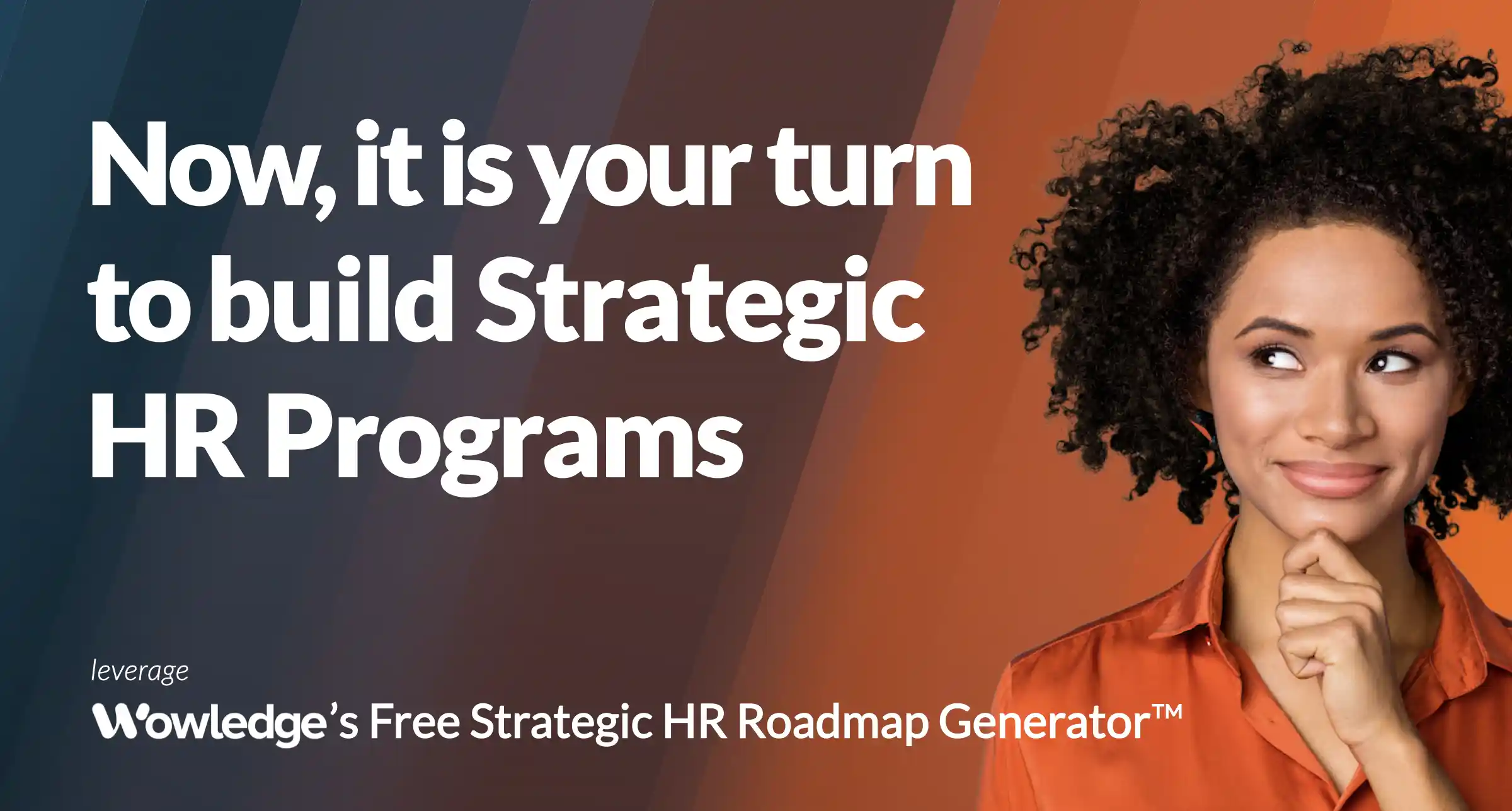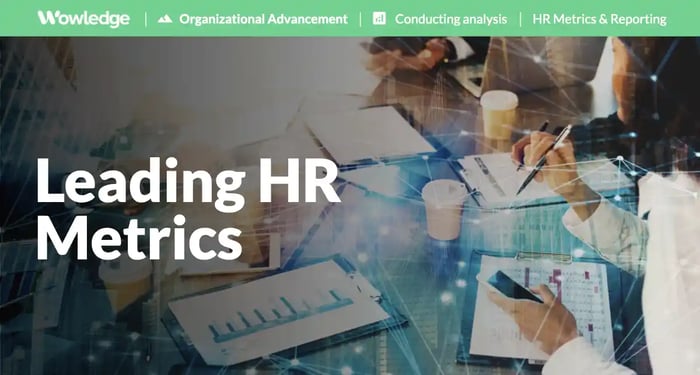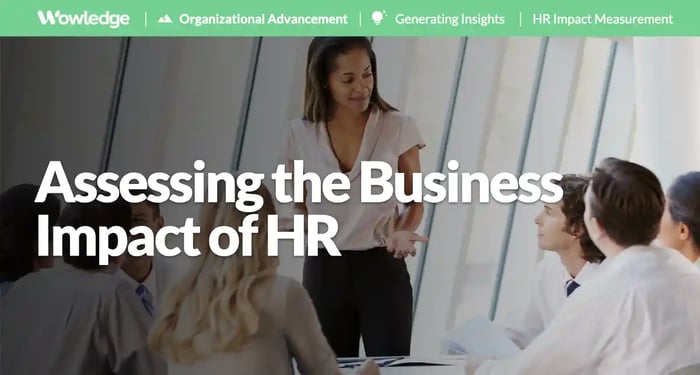Table of Contents
Human Resources functions have an enormous amount of both data and expertise about an organization’s talent. Yet the HR leader is most frequently not taking the lead on the business strategy discussions with talent implications. While the conversations around workforce planning, organizational restructuring, business unit turnover, and more, include Human Resources, they may be taking a secondary role. Alternatively, the HR leader may spot a talent imperative that is impacting a business and try to present solutions, only to find that the leaders are not listening. The HR leaders will discuss how the board, management, and other leaders are not listening to HR’s expertise and data. HR technology houses all the data on our current and past employees, from demographics, performance metrics, total rewards costs, satisfaction scores, and more. In addition, human resources professionals have a sense of what this data is telling the organization. We also know that CEOs and senior business executives list talent and workforce issues, like talent shortages, as a top-three priority issue in Gartner’s annual survey of top pressing organizational priorities. The issue, therefore, is not the data, HR’s expertise, or the business imperatives. So, what is the problem? The lack of a compelling narrative for HR initiatives.
Human Resource leaders often lack a compelling narrative that gets to the heart of the business issue and presents a solution in a way that these other stakeholders will understand. What does this mean? We need to leverage our data to speak the language of business and create a compelling narrative to shape the discussions around talent and workforce planning.
The challenge facing HR leaders
An article on SHRM.org entitled “Bringing HR and Finance Together with Analytics” discusses how HR often falls short in presenting its data, not in having it. Human resources often present data to solve an HR issue and fail to connect to the business challenges. Instead, if HR used the data to answer a business-focused issue, with robust analytics and visuals to support it, the engagement in the issue would change. In that case, it will find that the proposal is taken more seriously. Per the SHRM article, “It is often the same narrative HR has told many times before; the difference is that HR is now using the tools and language of business to support and tell its story.” In discussions with CEOs, board members, and CFOs, I have learned through the years that it is not a desire to block human resources initiatives that derail the funding and approvals. Instead, it falls on human resources to answer the following questions to create a robust narrative for HR initiatives:
- How does this initiative address a business imperative (not necessarily a talent imperative)?
- What value would it bring to the organization (financial and strategic return on investments)?
- How would this value be more impactful than other projects being considered for funding (think capital budgeting discussions)?
- Why should we care about this issue as it relates to our business?
Human resources professionals are not alone in the quest for building more compelling and influential narratives for HR initiatives with the data. People do not connect with the data unless a story compels them to do something about it. Brent Dykes wrote an article for Forbes that talks about compelling data narratives that need to be memorable, persuasive, and engaging. Human resources have data that can support these narratives, but it is all about being focused on the right things. If we present to a board, what narrative for HR initiatives will be memorable to them (does it include a story or specifics of a current business implication on talent) and will persuade and engage them to action? If we understand our data and how it connects to the business and financial implications and can make it enjoyable, we set ourselves up for success.

Become a storyteller
The Forbes article discusses the importance of connecting our data with other components to persuade our audience to act. Using our data, we must create a narrative for HR initiatives to explain what it all means. Harvard Business School discusses data analysis as needing to be focused on descriptive, diagnostic, predictive, and prescriptive to build a complete picture. Using visuals with our narrative helps engage our audience, and when we connect the visuals back to our data, we will enlighten them about the needed change. Think about the last time you presented to your senior executives or board. Did you focus on the data -> narrative -> visuals -> change continuum?
Building a compelling business narrative for HR initiatives in this manner is not unlike writing a captivating fictional story. You still need many of the same elements to propel people to action and to engage them in the conversation.
Characters
This is where we are clear on the intended target for our initiative. Being direct about the intended audience for the initiative or change is essential for engaging the importance of the initiative.
Setting
What is the setting for the initiative? Is this for a business unit with decreasing productivity? What is the environment in which this issue is occurring? We need to be abundantly clear about the environment for context. Think of your typical SWOT analysis—Strengths, Weaknesses, Opportunities, and Threats. Helping our audience understand the strengths and weaknesses of the situation creates an opportunity to build more of an understanding.
Conflict, Risks, or Potential Downfalls
Speaking of SWOT, we also need to have a business problem or challenge to be solved. This is where the opportunities and threats arrive. Data should show that we have something at risk. This risk could be that we will not meet business objectives, such as sales numbers, with the increased turnover in the business unit. However, the risk must be linked to a business or financial implication. Don’t start with the risk of turnover. That is a talent symptom. Start with the decrease in business productivity as the risk, with talent turnover imperative to address this business risk when developing the narrative for your HR initiatives.
Theme
We can often get lost in too many messages. There can be many issues presenting risks, so we try to bring ideas and initiatives for everything. The problem with too many initiatives and issues being proposed is that we dilute our messages. Instead of a strong narrative around a group of employees in a particular setting facing a risk that needs immediate action, our audience is trying to figure out how we connect all the dots in your presentation. Pick a theme – what is the biggest priority for us to tackle? Focus on that issue today in this presentation – build the story, have the narrative for HR initiatives, have compelling visuals, and have a cohesive theme. Your audience will be more engaged in understanding and moving on to a theme they know and believe in through your narrative.
Point of View
Once we have set the correct narrative and our audience is engaged in the story our data informs us about; we need to be direct in a point of view. Nothing is worse than having someone present a compelling narrative about an issue and then throw the task of identifying a solution on another leader’s lap. Let the data, experience, and benchmarking drive a point of view about solutions and implications. Even if the solution is not fully developed, know the direction you recommend as a next step.
If built like a story, the compelling narrative for HR initiatives will help us create a cohesive message that can spur action. Once we understand the story we are building, we can frame the narrative in a presentation or discussion format that engages our leaders and peers.

Building a compelling narrative
As you prepare your next data-driven presentation or discussion, below is a checklist to establish a narrative for HR initiatives that helps ensure that the data will have an impact and resonate with our business peers:
1. Engage with a business priority
Often, HR will give a narrative that starts with an HR issue. “Turnover is increasing, and here is what we want to do to address it.” Yes, turnover is an organizational issue, but it is more than just turnover for your Board and executive teams. It is a business imperative issue because this turnover can correlate with lower efficiency, decreased production, customer branding, engagement challenges, and much more. Start with the business priority and then dig into the HCM imperative, directly connecting to the business, meeting its strategic or financial goals. Speak to your audience in their language, and it will hit at the heart of what they care about. Right or wrong, that language is a business strategy, financial implications, and market reputation.
2. Maintain objectivity and transparency
Own the good and bad and acknowledge it. People mistrust data if it doesn’t give the whole story. Your data should be unbiased and truthful in what it says. Your interpretation of the data and recommendations are clearly where the experience and expertise arrive, so keep them out of the data that frame your narrative. A Harvard Business Review article on “How to Tell a Story with Data” discusses the importance of being objective with your data. “There are simple ways to encourage objectivity: labeling to avoid ambiguity, having graphic dimensions match data dimensions, using standardized units, and keeping design elements from compromising the data.”
Also, acknowledge the data that may not support your narrative. Don’t hide it. Instead, build into your narrative for HR initiatives why this data does not inform or is not critical for your recommendation.
3. Simplify with “less is more”
This concept cannot be emphasized enough. We instinctively want to show everything we gathered and evidence of support on why we are correct in proposing this initiative. In its article, “Storytelling that Drives Bold Change,” Harvard Business Review has the perfect saying for this concept: “Understand deeply, describe simply.” Write your narrative and then sit back to reflect. Can I remove portions of this narrative that are redundant or not imperative? Would I be able to take this narrative and reduce it by half and still be compelling? Less is more, especially when you have the data and information in your back pocket when needed. As one of my favorite quotes by Abraham Lincoln says, “If I had more time, I would have written a shorter letter.” Take the time to do less.
4. Use visuals to create impact
We can all get lost in numbers listed on a page. Help your audience understand the data that is being presented. Create graphic visuals that highlight the essential concepts. Guide the audience to the intersections and relationships between your data. Keep the visuals simple and clean so that they can be quickly understood. Clearly outline what the data represents.
5. Be abundantly clear about the ask (action)
A danger can happen when we build data and robust information into our presentations. The more information provided, the harder it is to be abundantly clear on the critical things of focus. One of those vital things is the “ask.” What do you want from this presentation? Tell your audience upfront and then reinforce, remind, and refresh. Too many presentations get lost in arguing points and lose the clarity of the request. Be direct, know the financial implication of the ask, and then use the narrative and data to support and reinforce the imperative for it.
6. Know the business impact
In addition to knowing your ask, you also need clarity on the return for the ask. A return on investment (ROI) is a performance measurement that evaluates your investment's financial or business impact. Many HR professionals struggle with this portion. How do you measure an ROI on a talent-related implementation? An ROI formula takes the current value of an investment and subtracts the cost of the investment. This number is then divided by the price. You started your presentation with a business priority to be solved. Use this as your starting point for the value to be created by this initiative. This may be a number built with educated assumptions, or you may have to build on research and other external sources, but you should know the general value creation. And then know your investment cost. ROIs help us measure success over time, especially after investing, and take the guesswork out of figuring out the importance of this recommendation.
7. Double- and triple-check your presentation
There is a saying that your work is better if you spend more time editing than writing it. The data needs to be cultivated and well narrated. However, mistakes will knock you out and generate credibility issues before you even have a chance to get through the presentation. Check the accuracy, look at it from the audience’s perspective, look for gaps in your narrative, and ensure you have covered the checklist of items. Then do it again, especially if this is a big ask or presentation.
Next steps
Data is critical to building a robust, business-oriented human capital management program. What is also becoming evident is the importance of the story that you tell with your data. The numbers alone will not change behaviors or influence action, so one must build a narrative for HR initiatives. The story that you tell around the data is just as, if not more, important. Building a story for your data and using the checklist above will ensure that you present your data in a business-driven, impactful, yet concise way while also speaking the language of your business partners with ROI. A reputation for building business-focused, data-informed narratives for talent issues is the ticket to getting you into the conversations earlier and as the leader of those in the organization.
Relevant Practices & Tools
Core HR Metrics and Reporting Practices to Establish a Robust HR Decision Support Capability. >
The structured measurement and presentation of employee and human resources process data that provides quantitative insights to drive objective and educated decision-making... more »
Understanding Strategic Business Needs and Translating Those to HR Metrics. >
The alignment of metrics to key organizational strategies and tactics is essential for the creation and development of quality metrics that are relevant to the business's needs... more »
Deploying Advanced Statistical Methods to Better Assess and Predict Trends in HR Processes, Policies, and Programs. >
Deploying advanced methods involves moving from descriptive or basic mathematical metrics (sums, averages, percentages, medians, etc.) to more sophisticated techniques... more »
Developing a Company-wide Culture of Data-based HR Decision Making. >
Producing reports is only the beginning. Many large and successful companies still struggle to make use of reports during decision-making a part of the widespread fabric of managerial... more »
The Strategic Business Need Conversion Tool: Translate Business Strategies into HR Metrics that Represent Actual Performance. >
The Strategic Business Need Conversion tool is a template that guides the translation of a business strategy or key objective into HR key performance indicators (KPIs) that demonstrate HR's... more »
FAQs
Which data sources should HR prioritize to build a business-first narrative?
Priority should go to integrated views that connect people data with operating and financial outcomes. Typical combinations include headcount, attrition, and skills inventory data linked to productivity, quality, revenue, margin, customer satisfaction, and risk indicators. Time series data at the business-unit level enables causal hypotheses and before-and-after comparisons. External benchmarks are useful as context but should be secondary to internally validated trends.
How can HR translate talent metrics into financial terms that CFOs accept?
Link people-related variables to critical business measures such as production throughput, error rates, sales volume, and rework costs. Build a model using statistical methods that convert changes (+/-) in turnover, vacancy days, or skill mix into revenue at risk, cost of delays, and overtime or contractor spend. Use historical correlations and regression analyses to define benchmarks and “normal” boundaries that can be used as early warning signs. Present assumptions explicitly and tie them to audited data sources where possible.
How should the story be tailored for different executive audiences?
The focus should be on the effect that HR processes and practices have on market, financial, and operational results. Boards typically respond to topics such as strategic risk, reputation gain or loss, and long-term value creation, so the narrative should emphasize enterprise risk mitigation and sustainability of competitive advantage. CFOs look for validated assumptions, cash impacts, and ROI payback timeframes, favoring concise And visual summary charts. COOs and business unit leaders prioritize operational throughput and service levels, benefiting from workflow visuals (e.g., process maps) and worker productivity and workflow capacity models. The core message stays consistent while evidence and emphasis shift by audience.
How can HR build internal capability in data storytelling at scale?
Develop training and practice programs to upskill and broaden data literacy across HR. Create and distribute common templates for business cases, ROI models, and pilot readouts, and train HR teams to use them. Pair HR analysts with finance and operations partners for joint reviews that sharpen assumptions and language. Create a data dictionary, vetted metrics calculation guide, and a catalog of past cases to standardize and accelerate future narratives. Recognize and reward highly effective examples so the practice becomes part of the operating culture.










